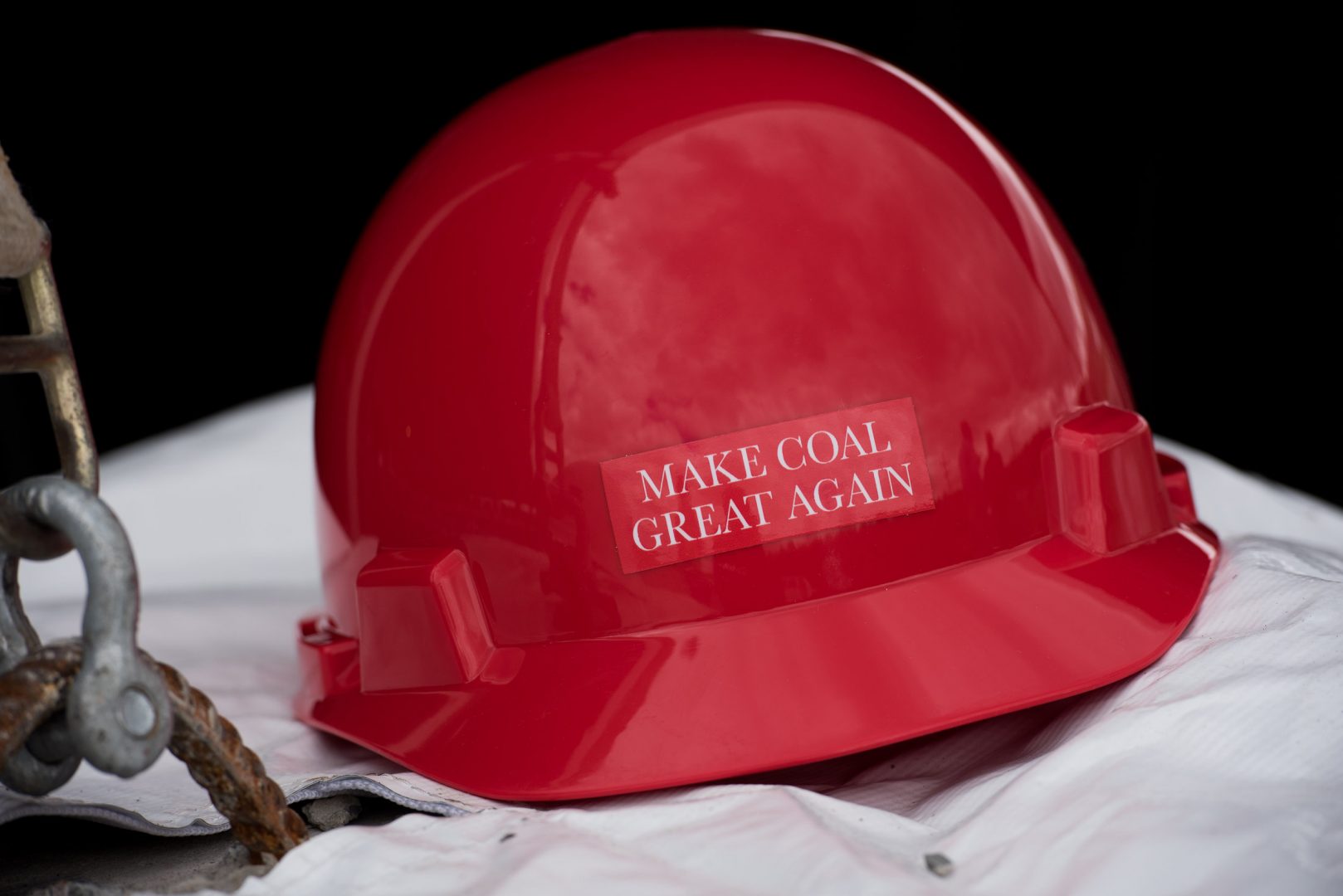
FRIEDENS, PA - JUNE 08: A "Make Coal Great Again" hard hat sits on a table at the grand opening of Corsa Coal's Acosta Deep Mine on June 8, 2017 in Friedens, Pennsylvania.
Justin Merriman / Getty Images


FRIEDENS, PA - JUNE 08: A "Make Coal Great Again" hard hat sits on a table at the grand opening of Corsa Coal's Acosta Deep Mine on June 8, 2017 in Friedens, Pennsylvania.
Justin Merriman / Getty Images

Justin Merriman / Getty Images
FRIEDENS, PA - JUNE 08: A "Make Coal Great Again" hard hat sits on a table at the grand opening of Corsa Coal's Acosta Deep Mine on June 8, 2017 in Friedens, Pennsylvania.
While the United States burned less coal in 2017 than it had in three decades, an uptick in global demand for Appalachia’s metallurgical coal — used in the steelmaking process — helped boost production this past year, according to a new analysis by an economic research firm.
Coal production rose 6 percent across the United States in 2017, which coincided with a 70 percent jump in coal exports, according to the Rhodium Group.
Peter Marsters, an analyst with the Rhodium Group, said a cyclone hit Australia last year, halting shipments from its coal mines.
“When those mines got knocked out, U.S. producers were able to step in and fill that gap,” he said.
U.S. coal companies also ramped up production as demand in China increased.
Marsters said China’s urbanization is driving a need for more steel as the nation constructs new residential and commercial buildings. Plus, Chinese officials imposed new air quality measures to curb the use of coal this winter. Coal is often burned in China’s homes for heating and used in community boilers.
“A bunch of steel producers saw that these regulations were coming in the winter when pollution is at its worst, so they front-loaded a lot of their production for the summer,” he said.
Experts who monitor the coal industry say these factors are behind the opening of a new metallurgical coal mine in Pennsylvania last year, and another one proposed for Somerset County.
Marsters said it’s unclear whether the uptick in metallurgical coal will continue.
“The Chinese economy is restructuring away from heavy industry and toward the service sector,” he said. “So the long-term trend for coal demand in China is downward.”
Regardless, the outlook for the U.S. coal industry as a whole is bleak.
Much of the coal produced in the United States is burned here for electricity — it is not the kind used to make steel — and it’s losing market share to natural gas and renewables.
“If you’re looking at can coal make a comeback, it’s a very pessimistic picture overall,” Marsters said. “International markets help out, but they certainly won’t bring coal back to its former heyday.”
StateImpact Pennsylvania is a collaboration among WITF, WHYY, and the Allegheny Front. Reporters Reid Frazier, Rachel McDevitt and Susan Phillips cover the commonwealth’s energy economy. Read their reports on this site, and hear them on public radio stations across Pennsylvania.
(listed by story count)
StateImpact Pennsylvania is a collaboration among WITF, WHYY, and the Allegheny Front. Reporters Reid Frazier, Rachel McDevitt and Susan Phillips cover the commonwealth’s energy economy. Read their reports on this site, and hear them on public radio stations across Pennsylvania.
Climate Solutions, a collaboration of news organizations, educational institutions and a theater company, uses engagement, education and storytelling to help central Pennsylvanians toward climate change literacy, resilience and adaptation. Our work will amplify how people are finding solutions to the challenges presented by a warming world.